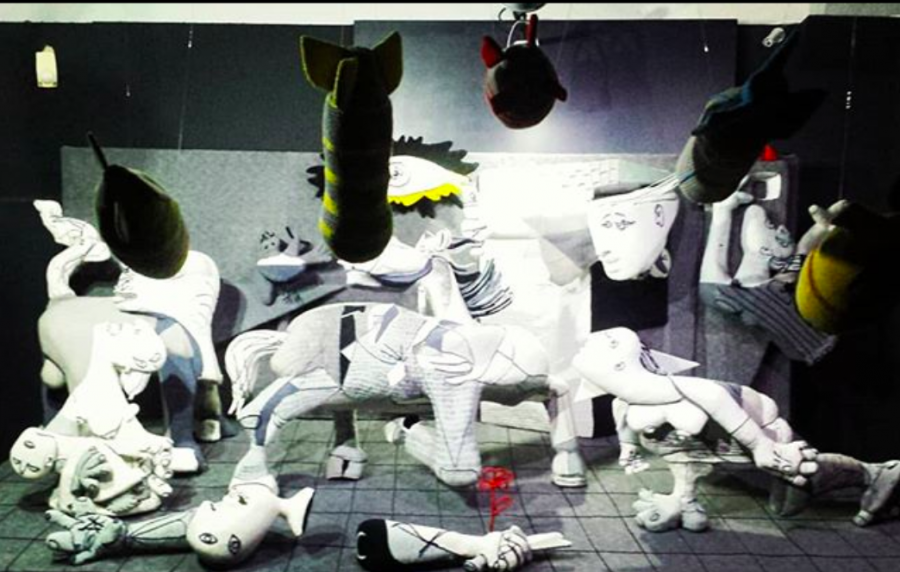After his dismissal from Harvard for researching LSD with Timothy Leary, Richard Alpert left the U.S. for India in 1967. He devoted himself to the teachings of Hindu teacher Neem Karoli Baba and returned to the States a permanently changed man, with a new name and a message he first spread via the collaboratively-edited and illustrated 1971 classic Be Here Now.
In the “philosophically misty, stubbornly resonant Buddhist-Hindu-Christian mash-up,” writes David Marchese at The New York Times, Ram Dass “extolled the now-commonplace, then-novel (to Western hippies, at least) idea that paying deep attention to the present moment—that is, mindfulness—is the best path to a meaningful life.” We’ve grown so used to hearing this by now that we’ve likely become a little numb to it, even if we’ve bought into the premise and the practice of meditation.
Ram Dass discovered that mindful awareness was not part of any self-improvement project but a way of being ordinary and abandoning excess self-concern. “The more your awareness is expanded, the more it becomes just a natural part of your life, like eating or sleeping or going to the toilet” he says in the excerpt above from a talk he gave on “Conscious Aging” in 1992. “If you’re full of ego, if you’re full of yourself, you’re doing it out of righteousness to prove you’re a good person.”
To really open ourselves up to reality, we must be willing to put desire aside and become “irrelevant.” That’s a tough ask in a culture that values few things more highly than fame, youth, and beauty and fears nothing more than aging, loss, and death. Our culture “denigrates non-youth,” Ram Dass wrote in 2017, and thus stigmatizes and ignores a natural process everyone must all endure if they live long enough.
[W]hat I realized many years ago was I went into training to be a kind of elder, or social philosopher, or find a role that would be comfortable as I became irrelevant in the youth market. Now I’ve seen in interviewing old people that the minute you cling to something that was a moment ago, you suffer. You suffer when you have your face lifted to be who you wish you were then, for a little longer, because you know it’s temporary.
The minute you pit yourself against nature, the minute you pit yourself with your mind against change, you are asking for suffering.
Older adults are projected to outnumber children in the next decade or so, with a healthcare system designed to extract maximum profit for the minimal amount of care. The denial of aging and death creates “a very cruel culture,” Ram Dass writes, “and the bizarre situation is that as the demographic changes, and the baby boomers come along and get old, what you have is an aging society and a youth mythology”—a recipe for mass suffering if there ever was one.
We can and should, Ram Dass believed, advocate for better social policy. But to change our collective approach to aging and death, we must also, individually, confront our own fears of mortality, no matter how old we are at the moment. The spiritual teacher and writer, who passed away yesterday at age 88, confronted death for decades and helped students do the same with books like 2001’s Still Here: Embracing Aging, Changing, and Dying and his series of talks on “Conscious Aging,” which you can hear in full further up.
“Recorded at the Conscious Aging conference sponsored by the Omega Institute in 1992,” notes the Ram Dass Love Serve Remember Foundation, the conference “was the first of its kind on aging. Ram Dass had just turned sixty.” He begins his first talk with a joke about purchasing his first senior citizen ticket and says he felt like a teenager until he hit fifty. But joking aside, he learned early that really living in the present means facing aging and death in all its forms.
Ram Dass met aging with wisdom, humor, and compassion, as you can see in the recent video above. As we remember his life, we can also turn to decades of his teaching to learn how to become kinder to ourselves and others (a distinction without a real difference, he argued), as we all face the inevitable together.
Related Content:
Josh Jones is a writer and musician based in Durham, NC. Follow him at @jdmagness












